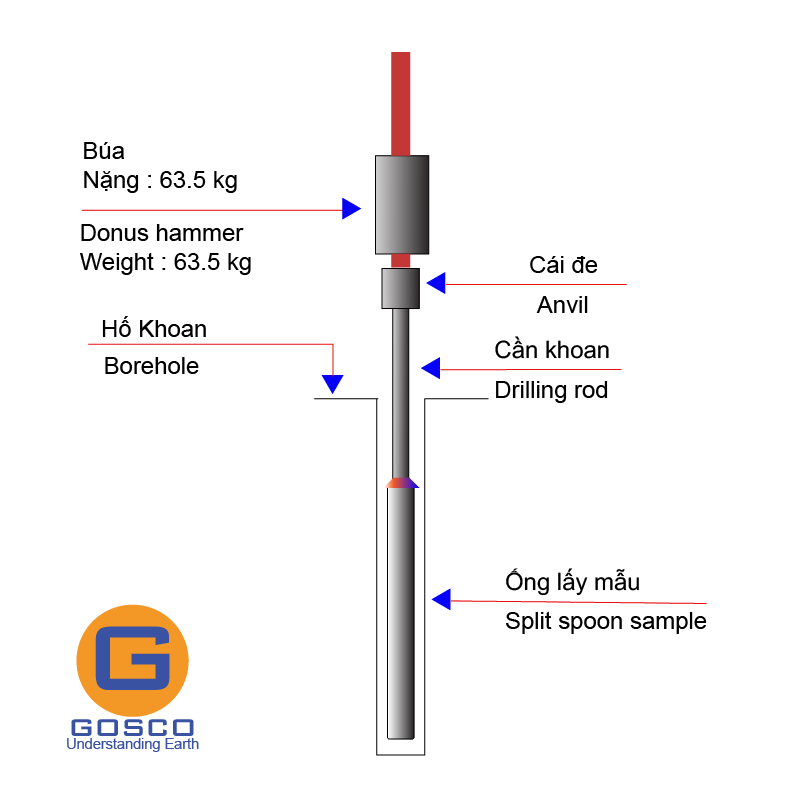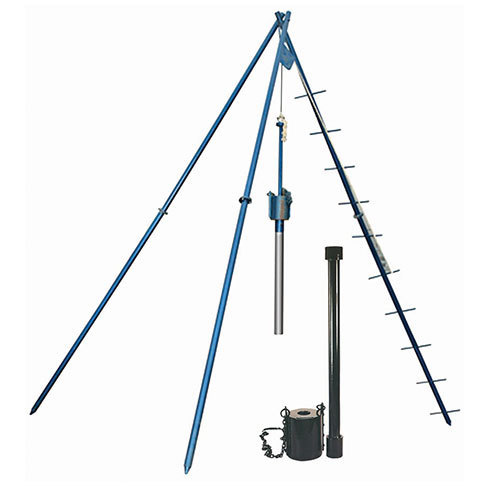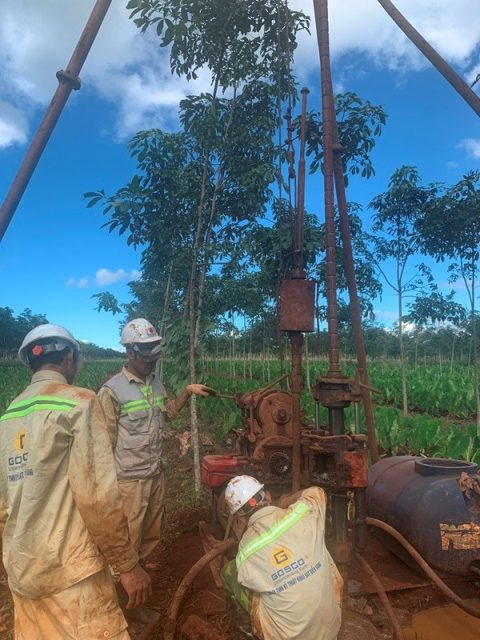THÍ NGHIỆM XUYÊN TIÊU CHUẨN
Thí nghiệm xuyên tiêu chuẩn (SPT) là thí nghiệm được thiết kế để cung cấp thông tin về các đặc tính địa kỹ thuật của nền đất. Thí nghiệm cung cấp các mẫu cho mục đích phân loại đất và cung cấp các thông số có thể được sử dụng cho các mục đích thiết kế nền móng, đặc biệt là sức chịu tải của nền đất.
GOSCO trang bị bộ thiết bị SPT cùng với máy khoan và thực hiện thí nghiệm này trong quá trình khoan. Chúng tôi cung cấp dịch vụ SPT với chi phí cạnh tranh.

Các bước thực hiện thí nghiệm SPT: – Bước 1: Khoan đến độ sâu thí nghiệm, vét sạch đáy hố khoan, lắp đặt thiết bị theo tiêu chuẩn. – Bước 2: Đánh dấu 3 khoảng bằng nhau (15cm) lên cần đóng. – Bước 3: Thả búa ( tạ) rơi tự do và đếm tổng số búa qua các đoạn đánh dấu. – Bước 4: Lấy số búa của 2 đoạn cuối cùng làm chỉ số SPT – Bước 5: Rút, hạ và tháo mẫu SPT, lặp lại các bước khi thực hiện thí nghiệm ở những lần tiếp theo. | Hình 1: Thí nghiệm SPT |
 Hình 2: Thí nghiệm SPT Hình 2: Thí nghiệm SPT | Thiết bị Thí nghiện xuyên tiêu chuẩn: 1. Ống lấy mẫu 2. Búa spt ( 63.5 kg) 3. Cần định hướng 4. Cần khoan 5. Cái đe |
| Mục đích chính của thí nghiệm là cung cấp các thông số cơ lý tương đối của trầm tích hạt thô, chẳng hạn như cát và sỏi mà hầu như không thể có được từ các mẫu bị xáo trộn. Ưu điểm của thí nghiệm này cũng như lý do chính cho việc sử dụng rộng rãi của nó là sự đơn giản và không tốn kém. |
Liên hệ để được tư vấn
CÔNG TY TNHH KỸ THUẬT KHẢO SÁT BIỂN VÀNG.©2023. GOSCO.


